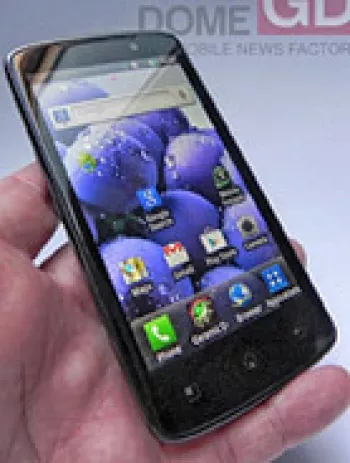
General Overview of LG S5100
The LG S5100 was a feature phone released in October 2005. Serving as a compact and simple mobile device, the LG S5100 was appreciated for its basic functionality suitable for users who preferred straightforward communication without the complexities of modern smartphones. Its design and features reflect a time when mobile phones were primarily focused on voice communication rather than extensive multimedia capabilities.
Design and Build
The LG S5100 measures 90 x 46.2 x 23 mm and weighs 95 grams, making it significantly more compact by today’s standards. This lightweight and portable design made it convenient to carry around, fitting easily into pockets or small handbags. The design was robust, crafted from durable materials to withstand everyday wear and tear. Its small screen and keypad occupy the majority of the front facade, emphasizing utility over fashion.
Display
Sporting a TFT display capable of showing 256K colors, the LG S5100 offered clear visuals for its time. The screen resolution of 128 x 160 pixels allowed for adequate display quality for the simple menu and application screens. Though small in size, the display was adequate for viewing the basic graphical elements and texts typical of feature phones during this era.
Camera Capabilities
The LG S5100 includes a single 1.3 MP camera, a common feature for phones released in that period. It was equipped with an LED flash to assist in low-light conditions, allowing users to capture images with basic detail. The camera was also capable of capturing video, adding a layer of multimedia functionality like recording short video clips.
Internal Hardware and Memory
In terms of memory, the LG S5100 comes with 64MB of internal storage, designed to store contacts, SMS messages, and a limited number of multimedia files. It lacked a memory card slot, meaning storage expansion was not an option, further emphasizing its role as a basic communication device rather than a multimedia station.
Connectivity Options
The phone supported GSM technology across 900, 1800, and 1900 bands, providing decent connectivity for voice calls and SMS services. It featured GPRS Class 10 for basic internet access, though it did not support EDGE connectivity. Bluetooth 1.2 was available for sharing files with other devices, a useful feature for exchanging images and ringtones. However, it lacked WLAN, Radio, and GPS capabilities, which are common in modern phones.
Battery Performance
The LG S5100 is powered by a removable Li-Ion 1000 mAh battery, providing sufficient power for its modest energy demands. This capacity was typical for feature phones, offering a comparatively long standby and talk time when measured against modern smartphones. Its removable nature allowed users to replace a depleted battery with a new one, extending the phone's lifespan beyond that of integrated battery models.
Sound and Audio Features
The device features a loudspeaker and stereo speakers for alert tones and media playback. While it doesn't include a 3.5mm headphone jack, the audible quality of calls and alerts was sufficient for everyday use. Users could download polyphonic and MP3 ringtones, providing personalization options for incoming call alerts.
Software and User Interface
As a feature phone, the LG S5100 ran basic software that supported SMS, EMS, and MMS messaging. It contained a WAP 2.0/xHTML browser for rudimentary internet browsing capabilities. The phone also supported Java MIDP 2.0, allowing users to download and install simple games and applications, expanding the phone’s functionality beyond basic features.
Additional Features and Usability
The LG S5100 supported downloadable games, enhancing its entertainment value. Although lacking advanced sensor technology, the inclusion of accessible messaging formats and a straightforward user interface made it user-friendly. The SIM card slot supported Mini-SIMs, a common format before the advent of micro and nano SIM cards.
Conclusion
The LG S5100 exemplifies the transition period of mobile phones where devices were increasingly incorporating multimedia features but still primarily served for communication. It appealed to those wanting simplicity, durability, and fundamental mobile utility. Though discontinued, it offered a snapshot of mobile technology evolution during the mid-2000s, portraying an era before smartphones became ubiquitous.
Key Features of LG S5100
- Supports GSM 900 / 1800 / 1900 bands
- Compact dimensions: 90 x 46.2 x 23 mm; weighs 95 g
- TFT display with 256K colors
- 1.3 MP main camera with LED flash
- Stereo loudspeaker for better sound quality
- 64MB internal memory with photo call enabled
- Bluetooth 1.2 connectivity
- Downloadable polyphonic and MP3 ringtones
- Java supported for additional applications
- Removable Li-Ion 1000 mAh battery
LG S5100 Drawbacks
- No EDGE support for faster internet connectivity.
- Discontinued model, meaning no official support or updates.
- No expandable memory option (No card slot).
- Lack of a front-facing selfie camera.
- No 3.5mm headphone jack.
- Limited connectivity options: no WLAN, GPS, or Radio.
- Uses a proprietary USB connection instead of a standard one.

View Also
More Phones
All Rights Reserved +14266 Phones © Mobilawy 2025

























